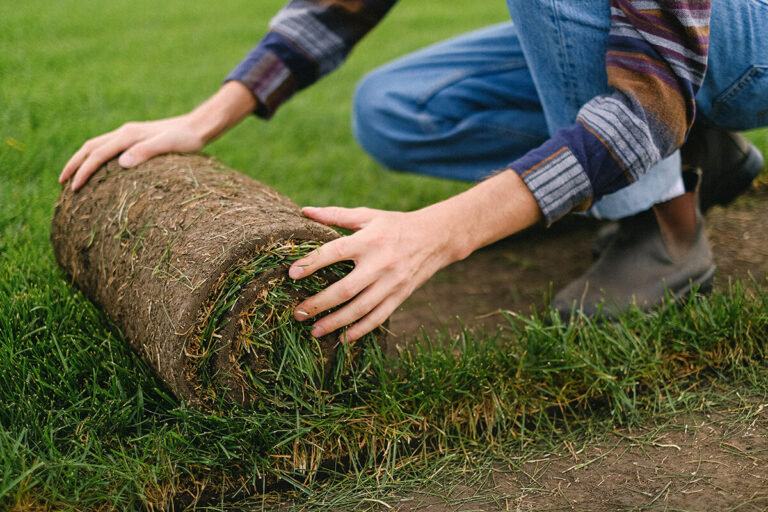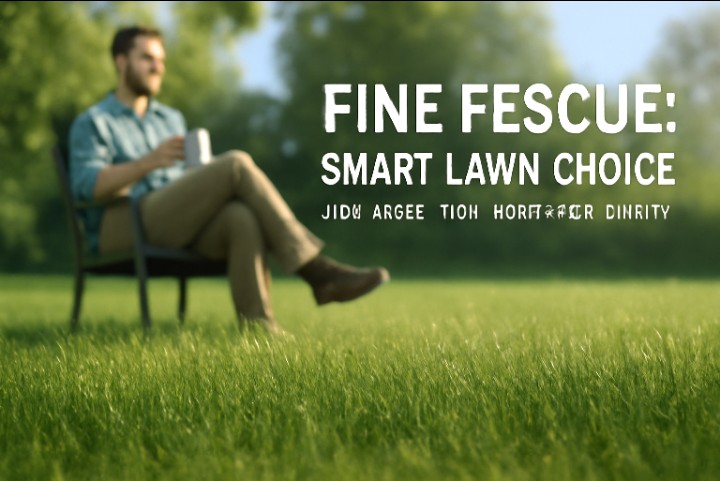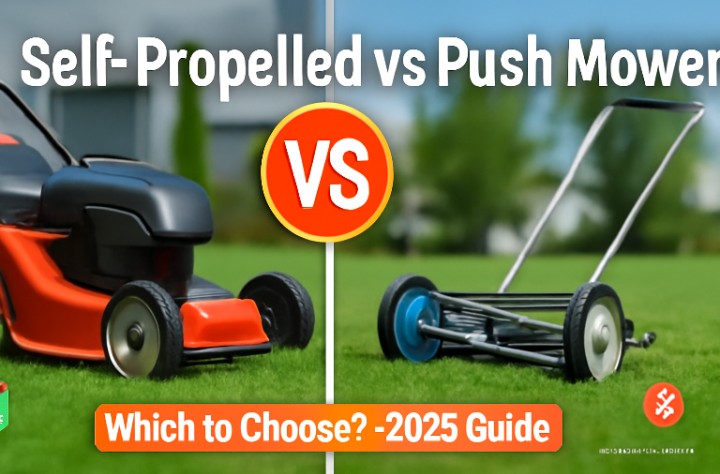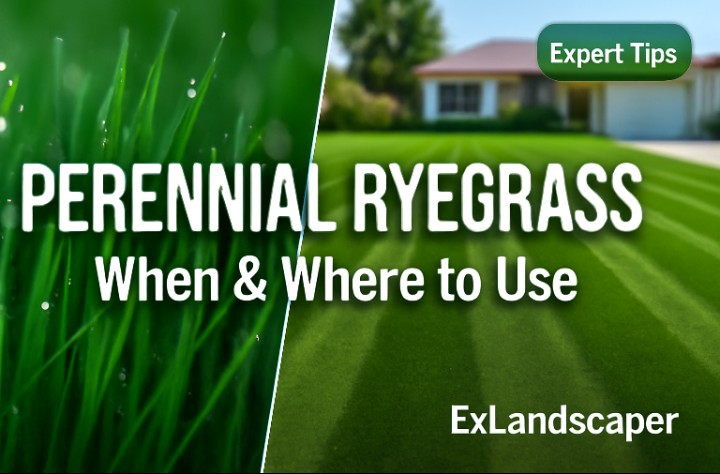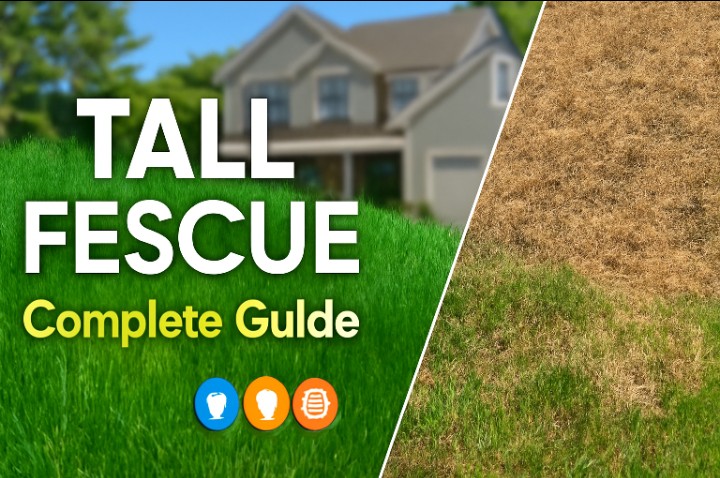California homeowners know the struggle. Finding perfect sod for your yard is not simple. The Golden State spans multiple climate zones from foggy San Francisco to desert-like San Diego. Each region demands different grass varieties. Water conservation matters more than ever.
Let me share what really works in California’s diverse weather patterns.
California’s Climate Reality
Just think, Northern California gets cool foggy mornings. Central valleys experience scorching summers. Southern regions face year-round heat and limited rainfall. Mountain areas deal with frost and snow. Your sod choice depends entirely on location. What thrives in Sacramento might fail in Los Angeles. Smart homeowners research before buying.
Top Sod Varieties by California Region
Northern California Champion: Elite Plus Fescue
Northern California is included in the Pacific Northwest. Cool-season grasses are adapted to the cooler and wetter conditions in this part of the state. Elite Plus Fescue stands out as the regional favorite.
This premium blend combines improved dwarf fescue and Kentucky bluegrass. Here is why it works:
– Handles partial shade beautifully (needs only 5-6 hours sunlight)
– Survives cold temperatures and frost
– Requires moderate water (perfect for drought-conscious homeowners)
– Thrives in foggy coastal conditions
Elite Plus beats alternatives in several areas. Most cool-season grasses need full sun. This variety tolerates shade better. Maintenance stays moderate while alternatives demand high upkeep.
Central California Winner: Northbridge Bermudagrass
Central California may not get as cold as the northern part of the state or as hot as the southern region, the right grass for Central California must have tolerance for some of the same weather conditions. Northbridge Bermudagrass handles the challenge perfectly.
Central valleys experience hot summers and mild winters. This grass variety delivers:
– Outstanding drought resistance and heat tolerance
– Dense turf that recovers quickly from wear
– Salt tolerance for challenging soil conditions
– Full sun preference matching valley conditions
Care requirements stay manageable. Keep soil moist until establishment. Mow between 1-1.5 inches during active growth. Apply nitrogen-rich fertilizer during growing periods.
Southern California Options
Southern California presents unique challenges. The best grass seed for this region of the state can withstand dry, hot conditions. Drought-resistant and heat-tolerant grass types that grow well in Southern California are Bermudagrass, Zoysiagrass and California buffalograss.
Most Popular: Fescue Bluegrass Blend
Marathon and Elite Plus varieties dominate Southern California lawns. Here is the performance breakdown:
– Color: Rich dark green
– Drought tolerance: 9/10 rating
– Disease resistance: Perfect 10/10 score
– Shade tolerance: Limited 2/10 rating
– Wear recovery: Strong 8/10 performance
Maintenance stays reasonable. Mow between 1.5-3.5 inches height. Water every other day or less. Sandy soil needs more frequent watering. Fertilize monthly during fall, winter and spring seasons.
Best Drought Fighter: St. Augustine Grass
This salt-tolerant warm-season grass is one of the best grass types for Los Angeles. St. Augustine grass excels in coastal areas with moderate shade.
Performance ratings tell the story:
– Color: Deep dark green
– Drought tolerance: Maximum 10/10 rating
– Disease resistance: Solid 7/10 score
– Shade tolerance: Excellent 9/10 rating
– Wear recovery: Strong 8/10 performance
Care requirements include mowing at 2-3 inches height. Never cut too short. Provide 1 inch water weekly during growing season. Apply all-purpose fertilizer every 2 months.
Best Recovery: TifTuf Bermuda
Athletic fields and golf courses choose TifTuf for good reason. This variety delivers maximum wear recovery.
Characteristics that matter:
– Color: Attractive dark blue to green
– Drought tolerance: Perfect 10/10 rating
– Disease resistance: Outstanding 9/10 score
– Shade tolerance: Limited 4/10 rating
– Wear recovery: Perfect 10/10 performance
Weekly mowing keeps TifTuf healthy. Cut between ⅜ inch to 2 inches height. Keep soil moist 3 inches deep first 2-3 weeks. Fertilize every 4-8 weeks during growing season.
Top 5 Overall California Sod Champions
1. Bermudagrass: The Heat Champion
Bermudagrass is one of the most popular warm-season grasses used in the inland areas of California with elevated temperatures in the summer months.
Best applications: Inland areas with elevated summer temperatures.
Key traits: Fast growth, excellent traffic tolerance, light green color.
Maintenance level: High (frequent mowing and fertilizing required).
Mowing specifications: 0.5-1.5 inches for hybrid varieties, 1.5-2.5 inches for common types.
Its fast growth habit means it needs regular mowing and fertilizing. Bermudagrass builds thatch easily, requiring routine dethatching. Poor shade tolerance means full sun locations work best.
2. California Buffalograss: The Water Saver
California buffalograss is a low-maintenance grass. This dark green covering only needs mowing every 2 to 3 weeks.
Best applications: Southern California desert regions with adverse conditions.
Key characteristics: Dark green color, extremely low maintenance, drought resistant.
Mowing frequency: Every 2-3 weeks only.
Height requirements: 2-3 inches cutting height.
Buffalograss requires minimal chemical treatments. Perfect choice for water conservation goals. Winter dormancy turns grass brown temporarily.
3. St. Augustinegrass: The Shade Master
Unlike Bermudagrass and buffalograss, St. Augustinegrass grows well in the shade. It is the most shade-tolerant warm-season grass.
Best applications: Los Angeles area and coastal regions.
Key advantages: Superior shade tolerance, salt-tolerant, thick appearance.
Maintenance demands: High (frequent mowing, fertilizing, pest control).
Mowing height: 3.5-4 inches cutting height.
Chinch bugs present the main pest challenge. Regular treatment prevents significant damage. Dense growth helps suppress weeds naturally.
4. Zoysiagrass: The Low-Maintenance Choice
As one of the best grasses for San Diego, Zoysiagrass is another excellent option for the Southern California area.
Best applications: San Diego and Southern California areas.
Key benefits: Salt-tolerant, slow-growing, deep roots, low maintenance needs.
Maintenance level: Low (infrequent mowing, minimal fertilizer).
Cutting specifications: 1-2 inches mowing height.
This grass is a slow-growing grass, so although its mowing height is as low as 1 to 2 inches, it does not need mowing often. Deep root system provides excellent drought resistance.
5. Tall Fescue: The Year-Round Performer
Tall fescue works well down in the Central California area. It also grows well in Southern California if grown on very shady properties.
Best applications: Central California, very shady Southern California areas.
Key characteristics: Year-round color, most heat-tolerant cool-season grass.
Maintenance level: Moderate (regular mowing, minimal fertilization).
Mowing specifications: 2 inches when grass reaches 3 inches.
Although tall fescue is not as heat tolerant and drought tolerant as warm-season grasses, the dark green, coarse grass is the most heat-tolerant cool-season grass. May thin during hot summers requiring fall overseeding.
Drought Tolerance Rankings
Water conservation drives many California sod decisions. Here is how varieties rank for drought resistance:
High Drought Champions
Buffalo Grass leads the pack with ultra-low water needs. This eco-friendly option saves significant water costs.
Bermudagrass follows closely with deep root systems. High heat tolerance complements drought resistance.
TifTuf Bermuda earns perfect 10/10 drought ratings. Research-backed performance in extreme conditions.
Moderate to High Performers
Zoysia develops deep root systems for water retention. Handles moderate drought stress well.
St. Augustine surprises with good resistance through deep roots. Coastal areas benefit most.
Tall Fescue tops cool-season drought options. Best choice for northern regions.
Yard Condition Factors
Sun and Shade Requirements
If you have a shady property, the grass you choose must not crave the sunlight too much.
Moderate to High Shade Tolerance:
– St. Augustinegrass (best warm-season shade option)
– Tall fescue varieties
– Zoysiagrass
– Bentgrass
Low Shade Tolerance (Full Sun Required):
– Bermudagrass varieties
– Buffalograss
– Kentucky bluegrass
– Perennial ryegrass
Soil Type Compatibility
Different soil types favor specific sod varieties:
| Soil Type | Best Sod Choices |
| Sandy | Bermuda, Zoysia |
| Loamy | Kentucky Bluegrass, Tall Fescue |
| Clay | Buffalo Grass, Perennial Ryegrass |
Traffic Tolerance Levels
Family activity levels determine grass selection:
High Traffic Areas:
– Bermudagrass (excellent recovery)
– Zoysiagrass (durable but slow recovery)
– Perennial ryegrass
Moderate Traffic Zones:
– Tall fescue varieties
– Kentucky bluegrass
Low Traffic Spaces:
– Buffalograss
– St. Augustinegrass
Maintenance Time Investment
Low Maintenance Champions:
– Buffalograss (minimal care required)
-Zoysiagrass (infrequent attention needed)
Moderate Maintenance Options:
– Tall fescue varieties
– Perennial ryegrass
High Maintenance Demands:
– Bermudagrass (frequent mowing, fertilizing)
– St. Augustinegrass (pest control, regular care)
– Kentucky bluegrass
Regional Care Requirements
Spring and Fall Success Strategies
These seasons offer optimal growing conditions. Focus on:
– Regular mowing for thick, healthy growth
– Balanced fertilizer applications
– Soil aeration relieving compaction issues
– Overseeding with drought-resistant varieties
Summer Heat Management
| Care Element | Best Practices |
| Watering | Deep, infrequent, early morning irrigation |
| Mowing | Raise blade height for root shading |
| Heat Stress | Monitor wilting, apply light cooling water |
Summer stress tests every grass variety. Early morning watering prevents fungal issues. Higher cutting heights protect roots from scorching sun.
Winter Protection Essentials
Cold protection keeps grass healthy through dormant seasons:
– Reduce watering as temperatures drop
– Limit foot traffic preventing compaction damage
– Use frost protection cloth for sensitive species
– Monitor cold-sensitive varieties (Bermuda, St. Augustine)
Quick Selection Guide
Climate-Based Recommendations
Northern California residents: Choose Elite Plus Fescue for cool, foggy conditions
Central California homeowners: Select Northbridge Bermudagrass for hot summers, mild winters
Southern California families: Pick St. Augustine for drought plus shade, or TifTuf Bermuda for high traffic
Priority Decision Matrix
Water Conservation Priority: Buffalo Grass saves most water, Bermudagrass offers good drought tolerance
Shade Requirements: St. Augustine excels in shade, Tall Fescue works for cool-season shade
High Traffic Use: Bermudagrass recovers fastest, Zoysiagrass provides durability
Low Maintenance Goals: Buffalo Grass needs minimal care, Zoysiagrass requires little attention
Making Your Final Choice
California’s diverse climate zones demand careful sod selection. Research your specific microclimate conditions. Consider water restrictions in your area. Factor in family activity levels and maintenance preferences. Smart homeowners consult local sod experts before purchasing. Regional suppliers understand microclimates better than national chains. They stock varieties proven successful in your specific area.
Remember the “best” sod variety depends entirely on your unique situation. Climate zone, soil type, sun exposure, traffic levels and maintenance preferences all influence the decision. Choose wisely and you will enjoy a beautiful, healthy lawn for years to come. California’s year-round growing season rewards homeowners who select appropriate grass varieties for their specific conditions.

